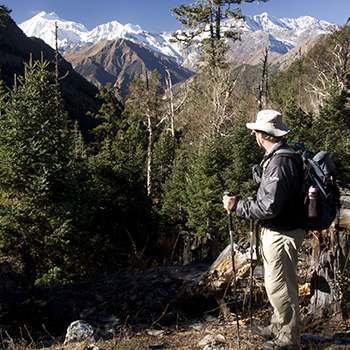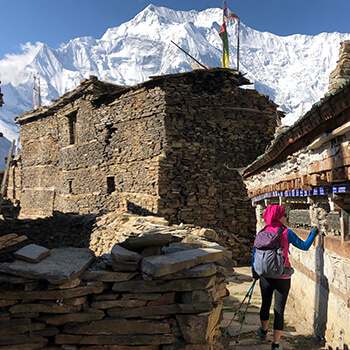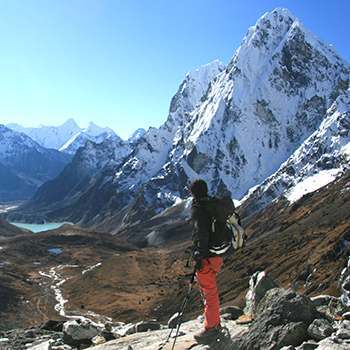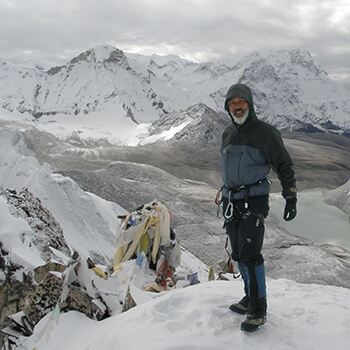Tamang Heritage Trail
Tamang Heritage Trail Trek
The Tamang Heritage Trail is an excellent trek along an easy-going route through authentic villages that offer a homestay program in traditional homes. Plus there are great views of mountains in Tibet, Langtang and Ganesh Himals, set against rhododendron forests. It’s all just a day from Kathmandu!
Key points:
- Trekking Grade: Grade 2
- Duration & distance: Maximum 9 days total
- Gradient: Gentle slopes and hills
- Quality of path: Formed track
- Quality of markings: Signs at beginning, end and during trek
- Experience required: No walking experience required
- Walking times: Less than 6 hours per day
- Steps: Short step section on second day
- Highest point: 3600m
- Best season: Oct to May
- Accommodation: Camping and teahouses
- Recommended map: NP105 GHT Series Langtang and Helambu, Himalayan Map House, 2017
- Recommended Guide Book: Nepal Trekking and the Great Himalaya Trail, Trailblazer, 2020.

GRADE 2
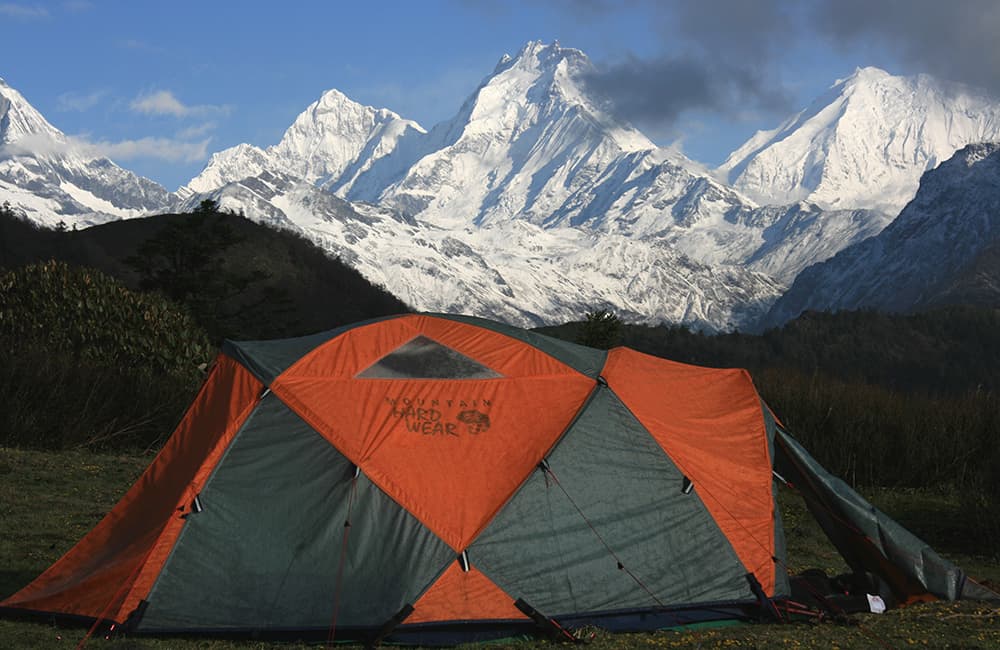

When to Trek the Tamang Heritage Trail?
Tamang Heritage Trail was created by some Nepali NGOs who worked with villagers to improve local trails, the result is an easy-going route through pristine mountain scenery. The trail was designed to showcase the local Tamang culture and is best when combined with one of the many Buddhist festivals throughout the year. So yes, this means the trail is perfect for any time of year! Although it is pretty wet and steamy during monsoon!
The highest point of this trek, at 3600m, also makes it ideal for those who are susceptible to altitude sickness but who still want to experience panoramic Himalayan views. The best time for views is November to January when the air is free from haze and the mountains in Tibet can be seen clearly, but expect cold nights! The main trekking seasons (both pre- and post-monsoon) see a few small trekking groups visiting, but the region is most popular with independent trekkers who are in search of something different. The openhearted hospitality of the Tamang people makes any welcome something special, especially if you visit during festivals.
Tamang Heritage Trail Accommodation and Permits
The Tamang Heritage Trail borders the Langtang National Park but you do not require any permits. However, the checkpost at Dunche might insist that you pay the National Park entry fee. Try you best to smile and explain that you aren’t going to visit the park!
Everything is basic and tailoured for Nepali trekking tourists, so things are very cheap everywhere, making this an ideal trek for those who want an inexpensive mountain fix. It is possible to hire locals guides and porters in communities. But beware of asking route directions from random folks you meet along the trail as there are lots of potential routes, so it is easy to get lost!
The Tamang Heritage Trail was affected in the 2015 earthquakes, but is now fully reconstructed. Homestays and teahouses offer accommodation and meals in every community, and be sure to check out the viewpoint above Nag Thali!!
The Tamang Heritage Trail is on the top northwest corner of the Langtang Map

Tamang Heritage Trail Route Options
One of the highlights of the trek is the opportunity for a ‘homestay’ in the village of Briddim. This involves staying in a traditional Bhotia house for up to three nights.
The main trail can be extended in a number of directions, including to Dudh Kund (‘Milk Lake’) on the northern slopes of Langtang Lirung. Also consider Sangjung Kharka and Kalo Pokhari near Paldor Peak, and Jaisuli Kund above Somdang. There are also connecting trails to valleys to the south-west of the Ganesh Himal including the Ruby Valley Trek (connects at Gatlang).
NOTE: A new road linking the border town of Rasuwa to Trisuli is now completed and unavoidable if you want to cross the Bhote Khosi valley between Briddim and Thungmen. There is also a road to Tatopani (via Chilime) and another to Somdang (via Gatlang). So, it is now impossible to avoid roads all the time, so take a scarf or buff to protect against dust when the occasional jeep passes.
How Much does the Tamang Heritage Trail Trek Cost?
To help you budget and plan, we’ve made a comprehensive costing explanation on How Much Does the GHT Cost? But here’s a simplified breakdown.
GHT Tamang Heritage Trail Trek for 9-days estimated costs:
- Solo as much as possible US$915.
- Twin-share with minimum guiding US$920 per person.
- Twin-share fully supported US$2,175 per person.
Do you have any questions about costs? Please Get in Touch for more details.
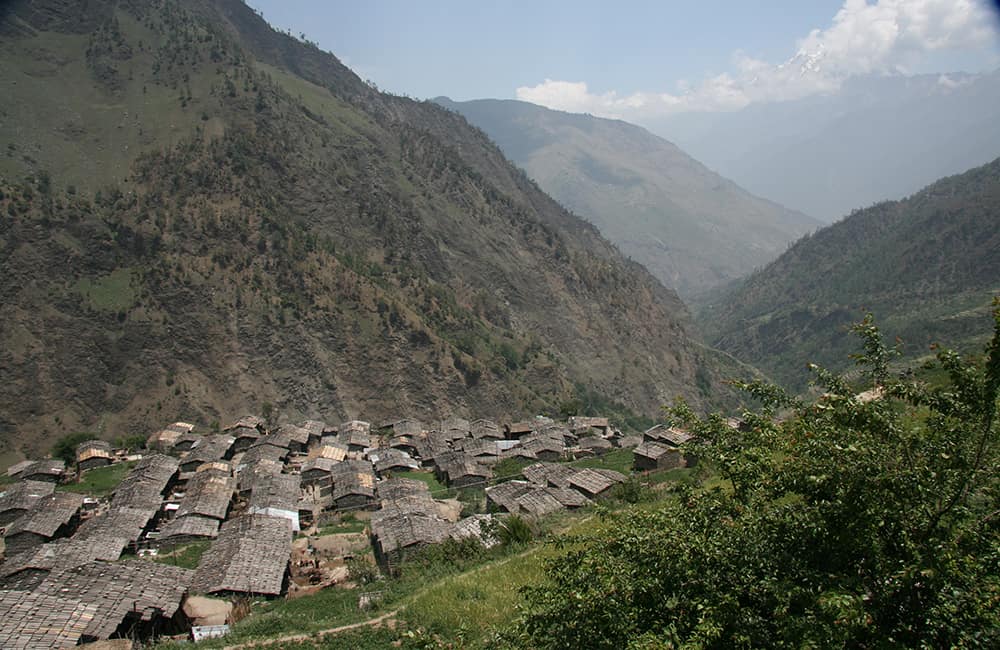
Customisation is Normal
Want to do things a little differently? Maybe take some extra time, or go a bit faster? Or avoid technical sections or combine with other trails? Every GHT trek is different and that changes the price, but please feel free to Get in Touch to ask questions and how to customise your own trek.
Bookings
Please note that www.greathimalayatrail.com does not handle bookings for treks. We are here to inform you about the trails and logistics, but you will need to book through a registered trekking operator in Nepal. If you would like an operator recommendation or feedback on a company you are already talking to, then please Get in Touch.
Your Impacts on the Tamang Heritage Trail Trek

Solo (Independent)
For a 9-day trek the social impact is a little low but your GHG and waste footprint is also low.
Consider taking an extra day or two to relax in a Briddhim homestay and really get to know the locals.


Twin Share (Independent)
For a 9-day trek the social impact is a little low but your GHG and waste footprint is also low.
Consider taking an extra day or two to relax in a Briddhim homestay and really get to know the locals.


Camping (supported)
The Tamang Heritage Trail was designed for solo and teahouse trekking so it’s not a surprise that these impacts are unsustainable.
So, there is no justification for doing a camping trek.

For more information about social, Green House Gas and waste impacts of treks, see The Impact of your Trek.
-
Destination
-
DepartureKathmandu
-
Dress CodeLow-altitude alpine clothing and camping equipment required
-
IncludedTamang Heritage Trail
-
GradeGrade 2
-
Idea Date Range15/10/2021
-
Style of TrekSolo independent and teahouse





